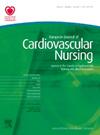Treatment paths and resources used for patients with a left ventricular assist device: an Italian survey
IF 3.9
3区 医学
Q2 CARDIAC & CARDIOVASCULAR SYSTEMS
引用次数: 0
Abstract
Background The number of people with end-stage Heart Failure implanted with a Left Ventricular Assist Device (LVAD) is constantly increasing, demanding hospitals to develop new and specific treatment paths. No previous studies described services and treatments available for these patients at national level. Knowing how hospitals organize their resources in order to meet patients’ need would be useful to standardize and improve care offered to this population. Purpose To investigate how Italian hospitals that are reference centers for people with LVAD organize treatment paths and resources for these patients. Methods A cross-sectional observational study was conducted. A survey including questions about all the relevant aspects of treatment paths for people with LVAD was created and validated by 4 LVAD experts (2 nurses and 2 physicians) from 2 different hospitals. The survey was then administered to the 22 (> 95%) of the Italian hospitals that are reference centers for people with LVAD. Results Results show a picture of how treatment paths and resources for people with LVAD are organized in Italy nowadays. Nurses play a pivotal role in the multi-professional team that takes care of these patients, being often acknowledged as LVAD Coordinator (case-manager) and being involved in crucial activities such as health education, monitoring of health conditions before and after dismission, and improving patients’ empowerment. Health education is recognized as an essential activity, but many hospitals still struggle to organize it according to patients’ needs and not organizational ones. Palliative care, even if recognized by the most recent guidelines as a crucial element of treatment options in people with LVAD, is a need that remains often unmet. Conclusion The growing number of people with LVAD requires an effort for re-organizing resources and treatment paths for them. There is a great need for integrating palliative care in the several treatment options for these patients. Nurses play a pivotal role in all stages of the treatment paths, and should be provided with specific education, as the whole multi-professional team.左心室辅助装置患者的治疗路径和所用资源:一项意大利调查
背景 植入左心室辅助装置(LVAD)的终末期心力衰竭患者人数不断增加,要求医院开发新的特殊治疗方法。以前没有任何研究描述过全国范围内为这些患者提供的服务和治疗。了解医院如何组织资源以满足患者的需求,将有助于规范和改善为这类人群提供的医疗服务。目的 调查作为 LVAD 患者参考中心的意大利医院是如何为这些患者安排治疗路径和资源的。方法 开展一项横断面观察研究。来自两家不同医院的四名 LVAD 专家(两名护士和两名医生)制作并验证了一份调查问卷,其中包括 LVAD 患者治疗路径所有相关方面的问题。然后对意大利 22 家(95%)作为 LVAD 患者参考中心的医院进行了调查。结果 调查结果显示了意大利目前为左心室人工肾脏患者提供的治疗途径和资源。护士在照顾这些患者的多专业团队中发挥着关键作用,通常被公认为 LVAD 协调员(病例管理者),并参与健康教育、监测停用前后的健康状况以及提高患者能力等重要活动。健康教育被认为是一项必不可少的活动,但许多医院仍在努力根据患者的需求而非组织的需求来组织这项活动。姑息治疗被最新的指南视为 LVAD 患者治疗方案的关键要素,但这一需求往往仍未得到满足。结论 随着 LVAD 患者人数的不断增加,需要努力为他们重新安排资源和治疗途径。将姑息治疗整合到这些患者的多种治疗方案中是非常有必要的。护士在治疗过程的各个阶段都发挥着关键作用,作为整个多专业团队,护士应接受专门的教育。
本文章由计算机程序翻译,如有差异,请以英文原文为准。
求助全文
约1分钟内获得全文
求助全文
来源期刊

European Journal of Cardiovascular Nursing
CARDIAC & CARDIOVASCULAR SYSTEMS-NURSING
CiteScore
5.10
自引率
10.30%
发文量
247
审稿时长
6-12 weeks
期刊介绍:
The peer-reviewed journal of the European Society of Cardiology’s Council on Cardiovascular Nursing and Allied Professions (CCNAP) covering the broad field of cardiovascular nursing including chronic and acute care, cardiac rehabilitation, primary and secondary prevention, heart failure, acute coronary syndromes, interventional cardiology, cardiac care, and vascular nursing.
 求助内容:
求助内容: 应助结果提醒方式:
应助结果提醒方式:


